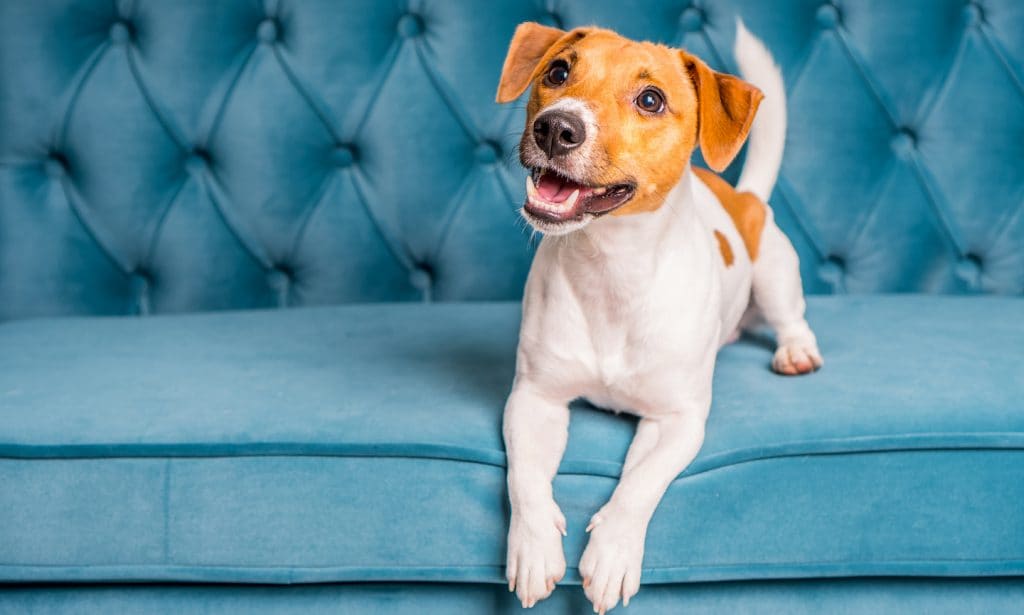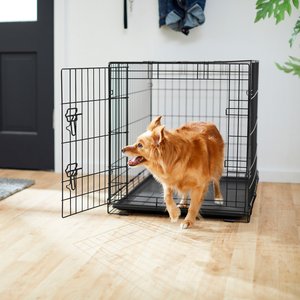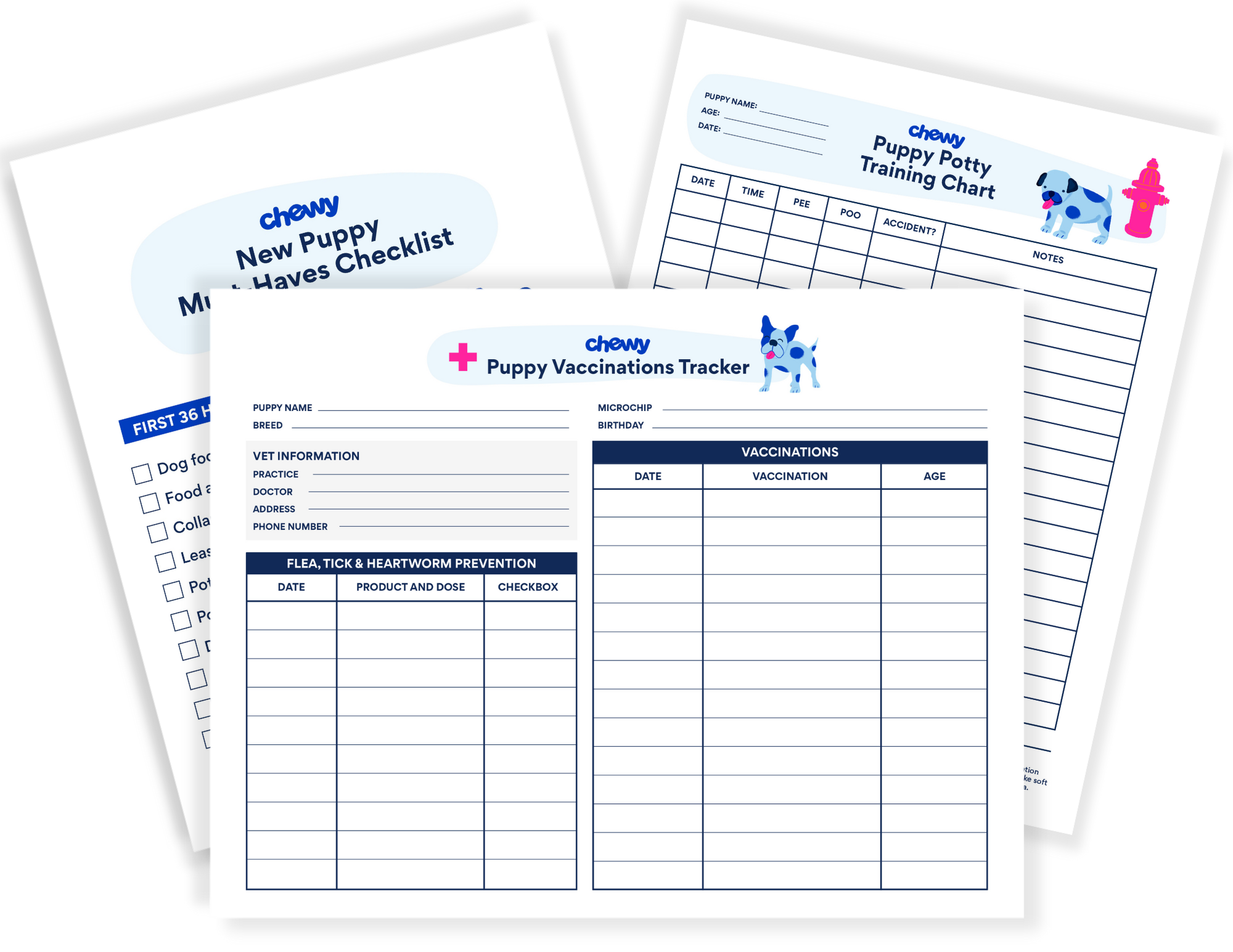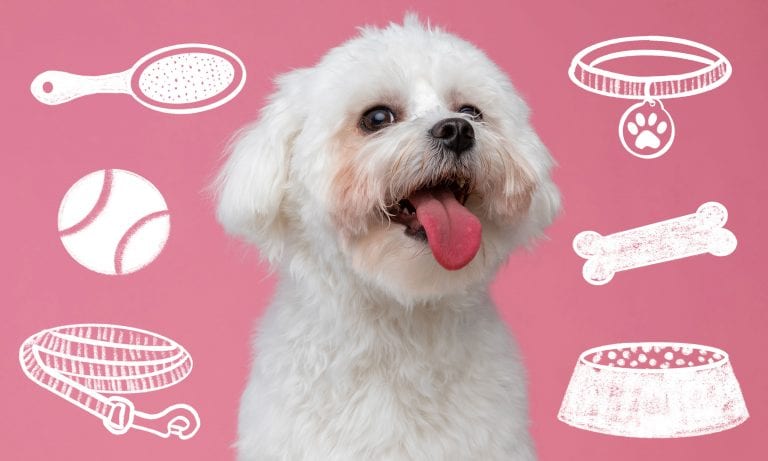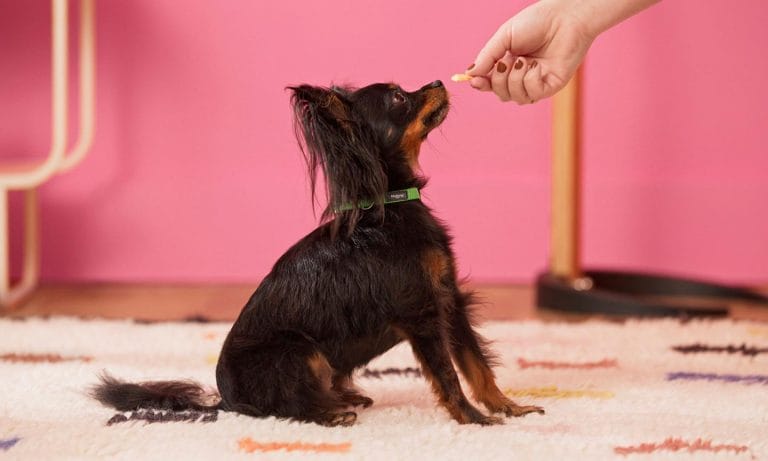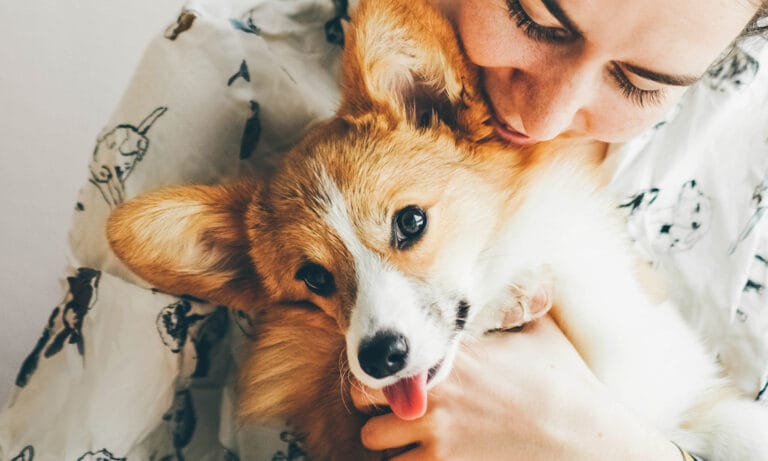So, you’ve decided to add a puppy to your family? Congrats! Taking care of a puppy is an adventure from the very first second, with cute overload highs and frustrating “not again on the carpet!” lows.
To help you prepare for bringing your puppy home, we’ve got expert advice to ease the transition, from puppy-proofing tactics to knowing when to call the vet.
When to Bring a New Puppy Home
First things first: You shouldn’t bring a puppy home until they’re ready to leave their mother. For most dogs, that means waiting until 8 weeks of age, says Dr. Katy Nelson, DVM, Chewy’s resident veterinarian.
Separating puppies from their moms earlier than 8 weeks old can negatively impact their social and emotional development. Find out more about the best age to take a puppy home.
No matter how old your puppy is, bringing them home means committing to spending time caring for your dog each day. Puppies can be especially time-consuming, says Sharon Mear, a certified canine behaviorist and trainer in New York City and the owner of Training Cats and Dogs. So when you’re planning to introduce your puppy to their new digs, timing is everything. If you’ve got a lot going on, whether it’s starting a new job or renovating the bathroom, it might not be the best time to add a puppy to the mix.
“You want to get a dog when you know things will be quiet for at least the first couple of weeks,” Mear says. “You can spend time playing with your dog, hanging out with your dog.” This, she says, will help your new pup acclimate to their new environment and learn the typical rhythms of daily life in your home.
It’s also a time for you to get to know your new puppy, watching their personality blossom and learning the behaviors and body language that indicate when they’re feeling anxious and when they’re feeling relaxed. That’s knowledge you can use to tell when they’re ready for a few curveballs, Mear says. “Then you can slowly introduce the surprises that are going to happen in life, because we don't live in a bubble.”
Supplies for Bringing a Puppy Home
Ask anyone who’s added a puppy to their family, and they’ll tell you that puppies need a lot of stuff. From toys to treats to grooming and beyond, the choices can feel overwhelming, especially if you’re a first-time puppy parent. Start with one of the most important items to purchase: a crate.
“I've always said dogs are not good decision makers,” says Dr. Nelson. That goes double for puppies who, like human babies, explore the entire world with their mouths. “We've got to find a way to protect them from their own curiosity. And crates are the best way that we have to keep them safe when we can't keep our eyes on them."
Puppies also tend to like crates because they’re den animals.
“They really do like a little cozy place to be able to get themselves into, especially when they're new and nervous about things,” Dr. Nelson says. She suggests pet parents look for a crate with a divider panel, like the Midwest Lifestages Double Door Collapsible crate, so you can adjust its size as your puppy grows.
Other Dr. Nelson-recommended supplies include:
- Puppy food: Start with whatever your pup was eating at the breeder or shelter, then ask your vet for recommendations. Get more info on what to feed a puppy here.
- Toys, especially ones for teething (a common puppy instinct)
- Treats for training and for fun
- A leash and collar with ID tags
- A bed
For specific recommendations and other must- and nice-to-haves, head to our New Puppy Checklist.
Prepping Your Home for a Puppy
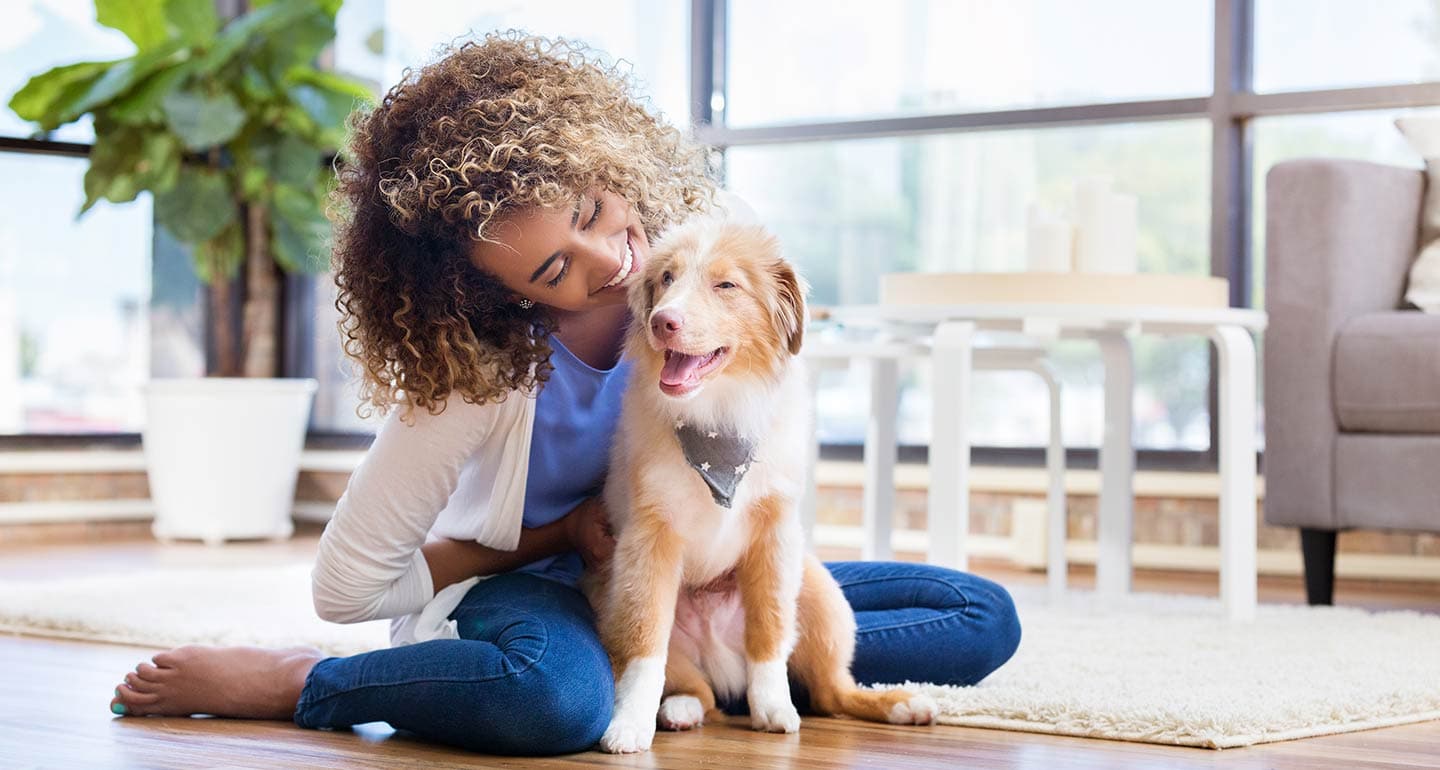
Remember what Dr. Katy said about puppies’ curiosity and questionable decision-making skills? That’s why puppy-proofing your house is such a crucial step in bringing your puppy home.
- To start, get down on your hands and knees. No, really! It’s the best way to get a pet’s-eye view of your place—and its potential safety hazards. Puppies are capable of gulping down everything from socks to underwear to tiny toys, Dr. Nelson says, so keep your stuff off the ground and teach two-legged family members to put their things away, too.
- Look for electrical cords, which your pup will be tempted to chew, and prevent your dog from getting to them by securing them to the walls or baseboards, hiding them inside dog-proof tubes, or simply blocking off their access, she says.
- Use pet gates. If any one area simply can’t be puppy-proofed, Dr. Nelson adds, “Pet gates can be really helpful if there are specific areas you don’t want your puppy going into—like the baby’s room or the formal living room and onto your grandma’s good couch.”
- Lock the lids to your toilet seat and trash cans, as well as the doors to cabinets with cleaning supplies or other toxic substances. (Hey, we told you they can be a handful!)
If, after a few days, it looks like your puppy might take some time acclimating to your home, you might want to get Adaptil’s electric diffuser with dog-appeasing pheromones that can calm and relax your pup during stressful situations, Dr. Nelson says.
For more tips on making your home safe for your new pup, read our guides to puppy-proofing the bathroom, puppy-proofing the stairs, and even puppy-proofing your home without sacrificing your aesthetic.
Rules for Your New Puppy
Here’s the thing about bringing a puppy home: It’s a lot of fun—and also a lot of work.
“Everything is brand-new, so your puppy is going to jump up and nip and mouth and want your attention,” Mear says. “You have to set the rules early on so that you get what you need from the dog.”
From house training to “sit” and “stay,” get ready to address these training topics head-on:
Potty Training
This is the stage new dog parents dread most, but it pays to have a Zen-like attitude.
“Having accidents is just part of it when dogs are getting used to being in a new place,” Dr. Nelson says. “They’ll learn, but you just have to give them a little bit of grace when it comes to that.”
For more tips on scheduling your puppy’s bathroom breaks, potty training in winter, or teaching your pup to go on a pad, check out our many potty-training resources. We even have a guide on how to potty train your pup in just seven days.
Download our Puppy Potty Training Chart, to help you keep track.
Chewing
Why is your puppy chewing on everything in sight? Between 4 and 6 months old, when puppies’ tiny needle teeth begin to fall out and their adult teeth come in, the chewing instinct kicks in hard.
“Whether it's painful, or just a little itchy, or feels weird, we're not 100 percent sure. But they certainly want things to chew on, and massage their gums, and help those teeth to break through,” Dr. Nelson explains.
The solution? Provide plenty of safe chewy toys, and restrict access to the things your pup shouldn’t gnaw on, like your furniture, rugs or shoes, Dr. Nelson says. Read up on more tips to stop your puppy’s destructive chewing.
Mouthing
Ideally, puppies learn to regulate how hard they bite while they’re still nursing (after all, mama dogs don’t like those sharp needle teeth anymore than humans do). But you need to reinforce those early lessons after bringing a puppy home.
Mouthing, aka when your puppy gently bites your hand during petting or playtime, is common puppy behavior, but it could lead to harder bites if unaddressed.
“Never, ever play with your hands,” Mear says, recommending that pet parents instead use chew-friendly puppy toys. Here’s how to teach your pet not to bite or nip.
Socializing
Puppies need to get used to different dogs and different people early in life, to reduce the chances that they’ll react fearfully or aggressively to others later on, Dr. Nelson says. Plus, she adds, “socialization is so crucial to their mental and emotional development.”
Before you take your puppy to walk or play in a crowded space, you can introduce them to sights and sounds by carrying them to the park and letting them get used to the people and pets there at a safe distance, Mear recommends. Want more ideas? Check out these six surprising spots to socialize your pup.
Puppies need to get used to older dogs too, Dr. Nelson adds, so ask your friends with patient pets if you can have a short play date or romp in their backyard. Find out more socialization dos and don’ts.
Training
You can begin basic puppy training—sit, stay and lie down—as soon as you bring your puppy home, Dr. Nelson says.
Even 8-week-old pups can learn new tricks. “They're super absorbent of all of those things when you start when they're very young,” she adds.
If you can afford it, have a trainer show you a few basics. Usually, your puppy is safe to attend a training class about a week after they’ve had their first set of vaccinations (check with your veterinarian to be sure this is true for your pup).
If in-person classes aren’t possible, there are books and videos that can help, too. Look for instructors who are well-respected and use positive reinforcement techniques. Here are more tips on puppy training.
Watch for Warning Signs
Many puppy problems are fleeting and can easily be fixed with a call to the vet or a trainer, Dr. Nelson says. But if your puppy is doing any of the below, it may indicate something more serious.
If your puppy won’t engage or make eye contact with your or anyone in the family, that’s not normal, Mear says. Nor should they be lethargic or sleeping more than 20 hours a day.
What it means: Your pup may have an underlying health issue like parasites, or may have been abused or badly socialized before you brought them home. Get a checkup by a vet or veterinary behaviorist to determine the cause and solution.
Many puppies cry and whine when you leave them alone (especially the first time). But if you leave them something interesting to chew on, your pupper should settle down soon after you leave.
If they don’t, or if you come home to a puddle of drool or signs they’ve tried to chew through their crate, that’s more serious.
What it means: Your pup might have a serious case of separation anxiety. Speak to a vet or an animal behaviorist, and take a look at these tips for reducing separation anxiety in your dog.
It’s not uncommon for puppies to growl when they play—a cute, gravelly sound that comes from the throat. But if your puppy gives a deeper growl when you approach them, that's a serious issue.
Most puppies aren’t aggressive, Mear says, so if yours is, that’s a red flag.
What it means: Your puppy may not feel well or be in pain, or they may just have been badly socialized. Call your vet to check your puppy out and speak to a behaviorist if bad socialization is to blame.
Mouthing is one thing, but if your puppy bites you out of the blue, there’s a chance something’s wrong.
“When a puppy comes flying over and takes a bite when you’re sitting close by, or when you're petting your pup just once or twice, and he growls from the belly and bites you—that’s not normal behavior,” Mear says.
What it means: Your dog may be in pain or super stressed out. Take your pup to the vet for a check-up and talk to a trainer about the best way to handle the problem.
New Puppy Printables
From a potty training tracker to a new puppy essentials checklist, we have six free printables for you to either download to your phone or print out. Learn more about each one, and print out all of them for the ultimate new puppy planner!
Now that you’ve got the lowdown on what to expect, you’ll be ready for the challenges of bringing a puppy home. But most of all, you’ll be able to enjoy watching your dog grow and flourish as the bond between you and your pet gets stronger every day.
This content was medically reviewed by a veterinarian.
More About Raising a Puppy:
Share:
